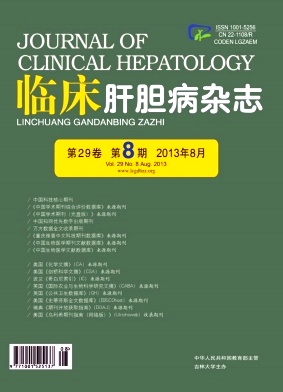|
[1] Chinese Expert Consensus Statement, Chinese Society of Liver Cancer (CSLC) , Chinese Society of Cinical Oncology (CSCO) , Liver Cancer Group, Chinese Society of Hepatol.Guidelines for radiofrequency abla-tion therapy of liver cancer[J].J Clin Hepatol, 2011.27 (3) :236-242.中国抗癌协会肝癌专业委员会, 中国抗癌协会临床肿瘤学协作委员会, 中华医学会肝病学分会肝癌学组.肝癌射频消融治疗规范的专家共识[J].临床肝胆病杂志, 2011, 27 (3) :236-242. (in Chi-nese)
|
|
[2]SALA M, LLOVET JM, VILANA R, et al.Initial response to percuta-neous ablation predicts survival in patients with hepatocellular carcino-ma[J].Hepatology, 2004, 40 (6) :1352-1360.
|
|
[3]CHEN MH, YANG W, YAN K, et al.Large liver tumors:protocol for radiofrequency ablation and its clinical application in110pa-tients[J].Radiology, 2004, 232 (1) :260-271.
|
|
[4]ZHANG YJ, LIANG HH, CHEN MS, et al.Hepatocellular carci-noma treated with radiofrequency ablation with or without ethanol in-jection:a prospective randomized trial[J].Radiology, 2007, 244 (2) :599-607.
|
|
[5]CHEN MH, GOLDBERG SN.Radiofrequency ablation of liver tumor-basic and clinical studies[M].Beijing:People's Medical Publishing House, 2009:274-346. (in Chinese) 陈敏华, Goldberg SN.肝癌射频消融-基础与临床[M].北京:人民卫生出版社, 2009:274-346.
|
|
[6]MORIMOTO M, NUMATA K, KONDOU M, et al.Midterm out-comes in patients with intermediate-sized hepatocellualr carcino-ma:a randomized controlled trial for determining the efficacy of ra-diofrequency ablation combined with transcatheter arterial chemoem-bolization[J].Cancer, 2010, 116 (23) :5452-5460.
|
|
[7]HOU YB, CHEN MH, YAN K, et al.Adjuvant percutaneous ra-diofrequency ablation of feeding artery of hepatocellular carcinoma before treatment[J].World J Gastroenterol, 2009, 15 (21) :2638-2643.
|
|
[8]WU W, CHEN MH, FU Y, et al.Long-term efficacy of radiofre-quency ablation in446patients with hepatocellular carcinoma[J].J Peking Univ:Health Sci, 2010, 42 (6) :716-721. (in Chinese) 吴薇, 陈敏华, 付颖, 等.446例肝细胞癌射频消融治疗远期疗效[J].北京大学学报:医学版, 2010, 42 (6) :716-721.
|
|
[9]YANG W, CHEN MH, WANG MQ, et al.Combination therapy ofradiofrequency ablation and transarterial chemoembolization in re-current hepatocellular carcinoma after hepatectomy compared with single treatment[J].Hepatol Res, 2009, 39 (3) :231-240.
|
|
[10]YAO FY, KINKHABWALA M, LABERGE JM, et al.The impact of preoperative loco-regional therapy on outcome after liver trans-plantation for hepatocellular carcinoma[J].Am J Transplant, 2005, 5 (4Pt1) :795-804.
|
|
[11] TANG Y, PAN C, WU HT, et al.To prevent the replase of hepato-cellular carcinoma after liver transplantation by radiofrequency abla-tion pre and during the operation[J].Chin J Organ Transplant, 2010, 31 (12) :765-766. (in Chinese) 唐缨, 潘澄, 武红涛, 等.术前和术中应用射频消融技术处理病肝预防肝移植术后肝癌复发[J].中华器官移植杂志, 2010, 31 (12) :765-766.
|
|
[12]SHI XJ, JIN X, DONG JH, et al.Outcomes of loco-regional ther-apy for down-staging of hepatocellular carcinoma prior to liver transplantation[J].Hepatobiliary Pancreat Dis Int, 2011, 10 (2) :143-150.
|
|
[13]WU J, YANG W, YIN S, et al.Role of contrast-enhanced ultra-sonography in percutaneous radiofrequency ablation of liver metasta-ses and efficacy evaluation[J].Chin J Cancer Res, 2013, 25 (2) :143-154.
|







 DownLoad:
DownLoad: